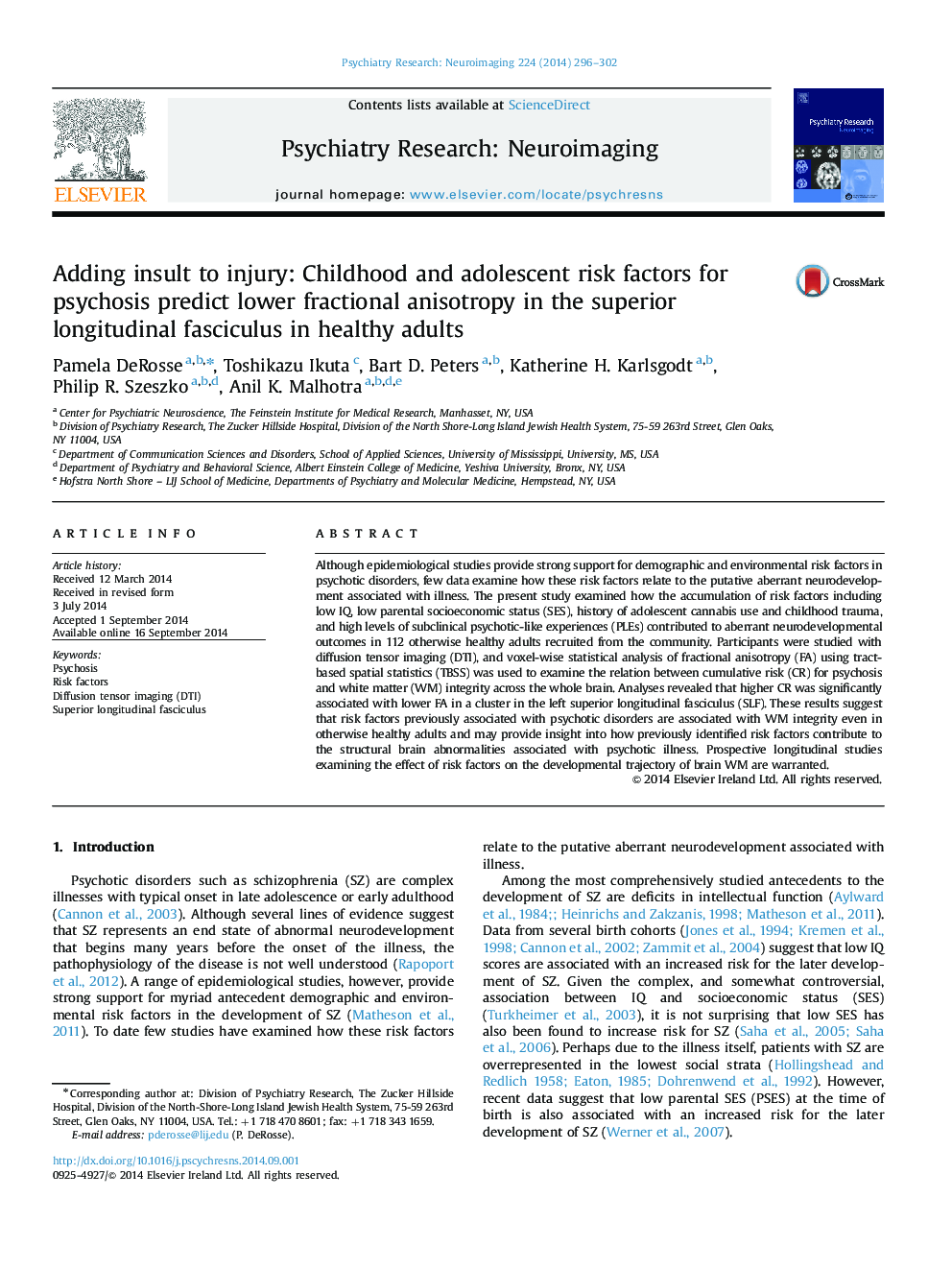| Article ID | Journal | Published Year | Pages | File Type |
|---|---|---|---|---|
| 334764 | Psychiatry Research: Neuroimaging | 2014 | 7 Pages |
•Demographic and environmental factors are known to increase risk for schizophrenia (SZ).•Few studies have examined how these risk factors may affect white matter development.•Using TBSS we tested the association between FA and cumulative risk for schizophrenia.•We found that cumulative risk was significantly associated with lower FA in the left SLF.•These findings may help explain the relation between risk factors and schizophrenia.
Although epidemiological studies provide strong support for demographic and environmental risk factors in psychotic disorders, few data examine how these risk factors relate to the putative aberrant neurodevelopment associated with illness. The present study examined how the accumulation of risk factors including low IQ, low parental socioeconomic status (SES), history of adolescent cannabis use and childhood trauma, and high levels of subclinical psychotic-like experiences (PLEs) contributed to aberrant neurodevelopmental outcomes in 112 otherwise healthy adults recruited from the community. Participants were studied with diffusion tensor imaging (DTI), and voxel-wise statistical analysis of fractional anisotropy (FA) using tract-based spatial statistics (TBSS) was used to examine the relation between cumulative risk (CR) for psychosis and white matter (WM) integrity across the whole brain. Analyses revealed that higher CR was significantly associated with lower FA in a cluster in the left superior longitudinal fasciculus (SLF). These results suggest that risk factors previously associated with psychotic disorders are associated with WM integrity even in otherwise healthy adults and may provide insight into how previously identified risk factors contribute to the structural brain abnormalities associated with psychotic illness. Prospective longitudinal studies examining the effect of risk factors on the developmental trajectory of brain WM are warranted.
